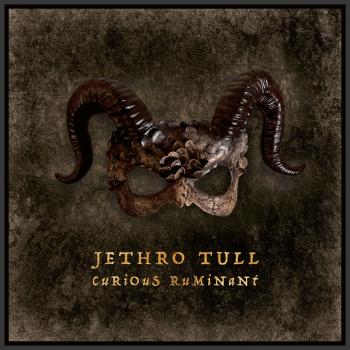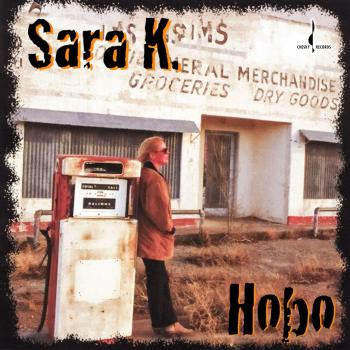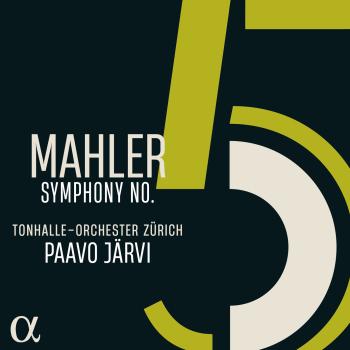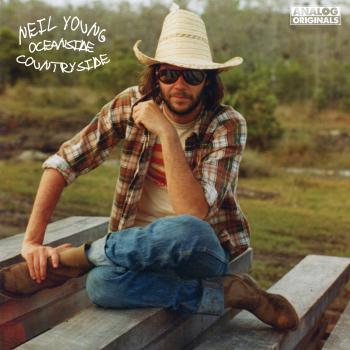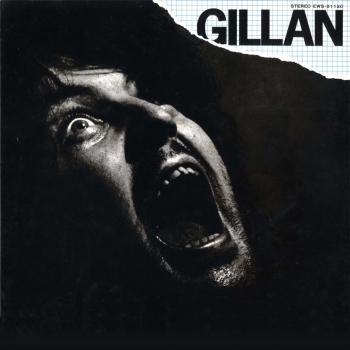
Le concert des parfums Michel Godard
Album info
Album-Release:
2009
HRA-Release:
14.10.2011
Album including Album cover
- 1 Improvisation (Sébastien Marq) 01:47
- 2 Ambre 03:42
- 3 Impermanence 05:08
- 4 improvisation (Gérard Marais) 02:06
- 5 Archangelica 04:29
- 6 Improvisation (Michel Godard & Patrice Heral) 03:53
- 7 Improvisation (Gavino Murgia) 02:04
- 8 Nebia del baix camp 05:49
- 9 Improvisation II (Gavino Murgia) 01:42
- 10 Iconoclaste 01:55
- 11 Allemande 03:09
- 12 Trace de Renaissance 05:34
- 13 Improvisation (Patrice Heral) 03:32
- 14 La ligne d'ombre 05:57
- 15 Improvisation (Michel Godard) 01:35
- 16 Ferma l'ali 05:26
- 17 Improvisation (Sébastien Marq) 03:59
Info for Le concert des parfums
Michel Godard hat auf seiner neuen Veröffentlichung Le Concert Des Parfums ein Gesamtkunstwerk zusammen mit Ursula S. Yeo, die als Parfumiers arbeitet, geschaffen. Entstanden ist ein Dialog zwischen Klang und Duft, der bei Konzerten auch riechbar wird, denn im ganzen Raum werden die Duftkompositionen verteilt und geben den Musikern Raum und Inspiration für deren Improvisationen, die einen wichtigen Teil neben den ausgearbeiteten Kompositionen von Michel Godard einnehmen.
Musikalisch hat man es mit einer Mischung aus alter Musik verbunden mit Jazz und freien Improvisationen zu tun. Manches Mal schimmert ein wenig von der musikalischen Art des frühen Louis Sclavis (mit dem Godard zusammen spielte) oder eines Jan Garbarek in den Stücken durch, ein anderes Mal fühlt man sich an die Musik in den alten Klöstern erinnert. In einem solchen, der Abbaye de Noirlac, wurde die Musik auch aufgenommen. Scheinbar der ideale Rahmen für dieses Projekt denn vor allem bei den Improvisationen zeigen die Musiker, auf welch hohem Niveau und mit welcher unglaublichen Inspiration Musik entstehen kann, wenn man die Umgebung und die Sinne auf sich wirken lässt.
Neben modernen Instrumenten wie Gitarre und Saxophon kommen auch alte Instrumente, wie z.B. die Blockflöte oder die Serpent – die schlangenförmige Vorläuferin der Tuba (meisterlich gespielt von Michel Godard, der dieses Instrument auch am Conservatoire national de musique in Paris unterrichtet) – zum tragen und fügen so noch einen weiteren Aspekt von Alt und Neu bei.
Auch klangtechnisch ist Le Concert Des Parfums ein herausragendes Ereignis, wie man es von Produktionen aus dem Hause Carpe Diem gewohnt ist. Höchste Empfehlung! (Ingo Andruschkewitsch, musikansich.de)
Michel Godard, Serpent & elektrischer Bass
Patrice Heral, Elektronische Stimme & Percussion
Gerard Marais, Gitarre
Sebastien Marq, Blockflöten
Gavino Murgia, Stimme & Saxophon
Michel Godard
Born near Belfort (France) in 1960, Michel Godard soon established himself as an extraordinarily versatile exponent of the tuba, pursuing a career in jazz and classical music. Today he is one of the most virtous tuba and serpent players in Jazz as well as in improvised music.
Michel Godard's tuba performance is fantastic in every sense: his technical skill is astounding, his tone clear and warm, his ability to produce overtones ('multiphonics') and his musicality leaves the listener surprised at how light a seemingly cumbersome and heavy-weight tuba can sound.
In 1979 he picked up also the ancestor of the tuba, the serpent, an instrument with a name derivated after its form - looking like a coiled snake. The serpent's ivory mouthpiece gives it a characteristic warm and intense tone. With this 'second' instrument, Michel Godard has taken yet another step in broadening the field of expression in ancient music as well as in Jazz. Since 2002, Michel Godard is the serpent teacher at the 'Conservatoire national de musique' in Paris.
On the classical side, Michel Godard played since 1988 with the Radio-France Philharmonic Orchestra, the French National Orchestra, the Ensemble Musique Vivante, , the ancient music Ensemble La Venice and 'XVIII-21Musique de Lumieres'. He was also a member of the 'Arban Chamber Brass' quintet (notably touring Japan, the U.S., Africa) and interprets works from the solo repertory, too. Little wonder that, with recourse to such a fund of experience, he gives international master classes, and has been discovered by European jazz as well as by the avant garde. On the jazz side he was a member of the French Orchestre National de Jazz from 1989 to 1991 . Since then all over Western and Souther Europe Michel Godard has been involved in numerous creative projects with Michel Portal, Louis Sclavis, Henry Texier, Enrico Rava, Michael Riessler, Kenny Wheeler, Ray Anderson, Rabih Abou-Khalil, Sylvie Courvoisier, Klaus König, Simon Nabatov, Wolfgang Puschnig, Linda Sharrock, Pierre Favre, Misha Mengelberg, Linda Bsiri, Gianluigi Trovesi, Christof Lauer, Maria Pia De Vito, Pino Minafra, Luciano Biondini,Willem Breuker, Herbert Joos, Dave Bargeron and many more.
As a composer, Michel Godard was comissioned by Radio France (“Penthés(il)ée II”), Donaueschinger Musiktage/Südwestrundfunk (“de mémoire de tuba”, “Tra la folla, mora, mormora” , “Praeludium”), French Ministere de la Culture (“Bradamente aux aguets”, “les enfants d’un paradis”).
He records many cds wit his own projects: 'Archangelica', 'ImpertinAnce', 'Cousins Germains' for CAMjazz, 'Castel del monte', 'Tubatuba' for Enja, 'Deep', 'trio rouge' for Intuition..........
Michel Godard also played and recorded with the pipeband of the Normandy town Quimper, with reggae star Alpha Blondy and with 'Canterbury' rock musicians John Greaves and Pip Pyle. Together with harpsichordist Freddy Echelberger, he collaborates with writer Nancy Huston (Tendres ténèbres, pérégrinations Goldberg, Tentatives de renaissance)
Guillemette Laurens - Mezzo-Soprano
Born 1950 in Fontainebleau, France. The French mezzo-soprano, Guillemette Laurens, was born to musicians parents. She began to learn music very early at the Academy of Toulouse, where she received prizes in musical theory, piano and chamber music.
At the age of 18, Guillemette Laurens joined the Opera-Studio and made her debut at Salle Favart in Paris a few years later in the role of Baba the Turkish in Igor Stravinsky’s The Rake's Progress. She formed part of the roster of the Lyric Workshop of the Rhine before entering to Les Arts Florissants of William Christie. Since 1980, she sang on the major musical stages of Europe, as well as the USA, Colombia, Israel, South Africa and Japan. She interpreted there oeuvre of roles, as The Nose by Dmitri Shostakovich, Dido and Aeneas by Purcell, Atys by Lully, I Puritani by Bellini, Clemenza di Tito by Mozart, L’Orfeo and L’Incoronazione di Poppea by Monteverdi, the Mass in B minor (BWV 232) by J S. Bach, L’enfance du Christ by Berlioz. She sang at the Festival of Aix-en-Provence in Iphigénie en Aulide, with John Eliot Gardiner, and Towards Bach concert series on London's South Bank.
Guillemette Laurens has worked with renowned ensembles: La Petite Bande directed by Gustav Leonhardt, La Chapelle Royale (Philippe Herreweghe), Les Arts Florissants (William Christie), Concerto Vocal (René Jacobs), Capriccio Stravagante (Skip Sempé), Il Giardino Armonico and Sequentia.
In 1998, Guillemette Laurens interpreted the role of Pénélope of Ritorno d’Ulisse in Patria de Monteverdi at Kunsten Festival des Arts in Brussels. This production, carried out in collaboration with Hand Spring Puppet Company produced by William Kentridge and directed by Philippe Pierlot, was acclaimed thereafter in Vienna, Berlin, Amsterdam and Zürich. In 1998 she also participated in the recording of Musiche by Bellerofonte Castaldi (world premiere) with Vincent Dumestre caused enthusiastic criticisms. In August 1999, she sang the role of Idonia in La Catena d’Adone by Mazzocchi within the framework of the Festival of Innsbruck under the direction of the lutist Konrad Junghänel.
Gavino Murgia - Saxophone & Voice
Murgia erlernte im Alter von vierzehn Jahren autodidaktisch das Saxophonspiel. Später besuchte er Seminare des Trompeters Paolo Fresu in Siena und wurde Mitglied des Orchestra Jazz della Sardegna, wo er unter Leitung von Bruno Tommaso, Giancarlo Gazzani und Mario Raja auftrat. Außerdem arbeitete er auch mit dem Blue Note Orchestra und der P. N. Big Band.
Fünf Jahre lang war er Mitglied von Mario Rajas Bigband, einem zwölfköpfigen Ensemble, dem u.a. auch Pietro Tonolo, Piero Leveratto, Maurizio Giammarco, Roberto Gatto, Marco Tamburini, Giampaolo Casati und Gabriele Mirabassi angehörten. Mit dem Ensemble nahm er an allen wichtigen Jazzfestivals Italiens teil. Außerdem trat er in Europa, Südafrika, den USA und Kuba auf.
Er arbeitete mit Riccardo Lays Quartett, im Duo mit Bebo Ferra und ist Mitglied der Band von Rabih Abou-Khalil. Seit Anfang der 2000er Jahre arbeitet er regelmäßig im Duo mit Michel Godard zusammen. Neben dem Saxophon spielt er auch Volksinstrumente wie die traditionelle sardische Launeddas und das Duduk und singt in der sardischen Variante des Kehlkopfgesangs.
Fanny Paccoud - Violin
Fanny Paccoud a suivi des études musicales au Conservatoire National de Région de Strasbourg où elle a obtenu un premier prix de violon et de musique de chambre. Elle est membre fondateur du quatuor Istrati, joue en duo avec le pianiste Michel Gaechter dans un répertoire allant de Beethoven à Schoenberg , se consacrant ainsi principalement à la musique de chambre. Avec l’ensemble Reflex, spécialisé dans le théâtre musical, elle crée plusieurs spectacles de Georges Aperghis (Veillée, Veillées, Le Petit Chaperon Rouge). Fanny Paccoud participe à la création de Forever Valley de Gérard Pesson ainsi qu’à la création du spectacle Momo de Pascal Dusapin. Elle enregistre Ai confini dell’ oscurità pour violon seul de Claudio Gabriele. En 2002, elle découvre la pratique de la musique ancienne sur instruments d’époque et devient membre du Concert Spirituel (dir. Hervé Niquet), de l’ensemble et du Quatuor «ad fontes» de Zurich, de l’ensemble Amarillis, d’orfeo 55 (dir. Nathalie Stutzmann) et fonde avec Alice Piérot, violon, et Elena Andreyev, violoncelle, le trio à cordes Anpapié.
Steve Swallow - Bass
As a child, Swallow studied piano and trumpet before turning to the double bass at age 14. While attending a prep school, he began trying his hand in jazz improvisation. In 1960 he left Yale, where he was studying composition, and settled in New York City, playing at the time in Jimmy Giuffre's trio along with Paul Bley. Since joining Art Farmer's quartet in 1964, Swallow began to write. It is in the 1960s that his long-term association with Gary Burton's various bands began.
In the early 1970s, Swallow switched exclusively to bass guitar, of which he prefers the 5-string variety. Along with Monk Montgomery and Bob Cranshaw, Swallow was among the first jazz bassists to do so (with much encouragement from Roy Haynes, Swallow's favorite drummer). He plays with a pick (made of copper by Hotlicks), and his style involves intricate solos in the upper register; he was one of the early adopters of the high C string on a bass guitar.
In 1974-76 Swallow taught at the Berklee College of Music. It is often speculated that he had an influence on the contents of The Real Book, which includes a fair number of his early compositions. He later recorded an album of the same name, with the picture of a well-worn, coffee-stained Real Book on the cover. In 1978 Swallow became an essential and constant member of Carla Bley's band. He has been Bley's romantic partner since the 1980s. He toured extensively with John Scofield in the early 1980s, and has returned to this collaboration several times over the years. Swallow has consistently won the electric bass category in Down Beat yearly polls, both Critics' and Readers', since the mid-80s. His compositions have been covered by, among others, Jim Hall (who recorded his very first tune, 'Eiderdown'), Bill Evans, Chick Corea, Stan Getz and Gary Burton.
This album contains no booklet.


